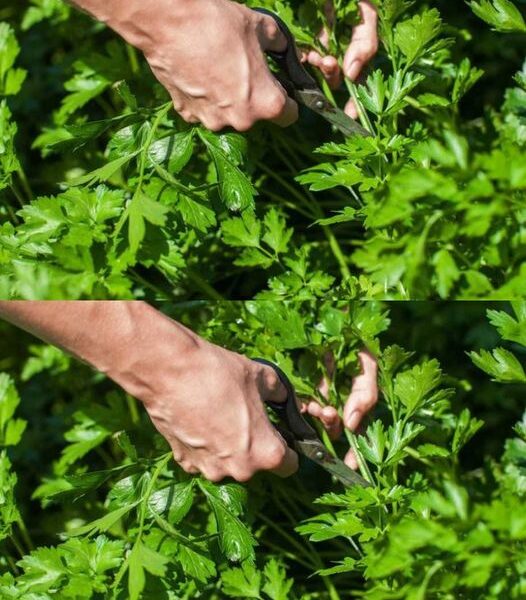The Most Effective Way To Grow Parsley
Parsley grows all year round! This beautiful umbellifer, an easy and rustic plant, has not only culinary qualities but also medicinal virtues. With parsley, you will never be short of vitamins or good mood!
You can grow flat-leaf parsley or curly parsley by starting it from seed indoors or by growing it in your garden or in pots.
1 – VARIETIES OF FLAT AND CURLY PARSLEY
There is not a great diversity of varieties unlike other vegetable or aromatic species. Here are the most common:
- Common or simple, common 2, an old variety with flat, slightly cut foliage and vigorous growth.
- Giant of Italy, another variety with flat foliage, large development and very productive.
- Curly or dark green curly, with strongly cut and curly foliage, of medium size.
- Alto, with strongly curly foliage, good development and good resistance to cold.
- Green Pearl, with curly foliage, good resistance to cold.
- Green Forest, a variety with curly foliage, well adapted to drought.
2 – PLANTING PARSLEY IN THE GARDEN
Parsley plants are planted in the garden at the end of April, once the last severe frosts have passed. If the plants are from your seedlings, you will generally plant them two or three months after sowing or earlier if they are well branched and reach a good ten centimeters.
When planting, leave a spacing of 25 cm between two plants or two clumps of a few plants.
As with sowing, planting is done in loosened and weeded soil. To plant your parsley plants:
- Dig a hole that is the same size as the plant.
- Arrange your parsley plant.
- Fill the gaps with soil.
- Carry out an initial watering.
3 – PLANTING PARSLEY IN POT
Growing parsley in a pot, on a balcony or on a windowsill, is entirely possible. It is even very practical to always have some at hand.
To plant parsley in a pot:
- Place some gravel or clay balls in the bottom of a pot to aid drainage.
- Fill the pot with good potting soil.
- Loosen the roots of your plant if necessary.
- Adjust the root ball in its new container by filling it with previously moistened potting soil.
- Water them and shade them from the sun with an upturned crate until the plants have taken root.
Please note: plants grown in pots need regular watering, the soil must always remain moist!
4 – WATERING AND FERTILIZING PARSLEY
Water the parsley plants at the base every week; consider watering more if the weather is very hot and dry. The soil around the plants should remain cool. Avoid overwatering the leaves. A drip system in the ground is very effective.
5 – DISEASES AND PARASITES THAT AFFECT PARSLEY
Parsley is resistant to most diseases. Slugs, however, are very fond of young parsley leaves, which should be protected with Ferramol.
6 – WHEN TO HARVEST AND HOW TO CUT PARSLEY
Parsley can be harvested all year round as needed, which is particularly practical.
When harvesting, observe your parsley carefully and harvest it from all over, do not cut a large part at once. By making a “strategic” cut like this you will allow your parsley to regenerate more quickly and therefore produce much more.
